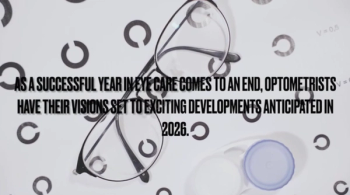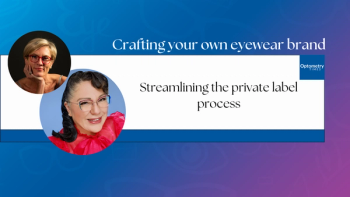
Seeing a clear path to the solution: solving the global vision crisis
World Sight Day is upon us and RestoringVision has issued a lofty but doable goal: help solve the global vision crisis.
RestoringVision, established by Mark Sachs in 2003, is engaging its partners around the world to provide vision screening and glasses for people living in impoverished areas where they have less than $2 a day on which to survive.
New donors can help alleviate this scenario in recognition of World Sight Day, which this year is being coordinated by the International Agency for the Prevention of Blindness (IAPB).
The goal, according to IAPB, is “to shine a light on blindness and vision impairment as a major, but solvable, public health issue. Celebrated under the #LoveYourEyes campaign, World Sight Day calls on everyone to prioritize eye health while highlighting the issues facing over a billion people worldwide who cannot access or afford the care they need to see clearly.”
Spotlighting the need
A report from the World Health Organization’s (WHO) World Report on Vision in 2019, outlined in detail the global need for universal eye care, and the global implications of forgoing vision health in communities around the world, according to Pelin Munis, PhD, Executive Director of RestoringVision.
She explained that in 2021, the United Nations built on the momentum created by the WHO report by adopting a resolution, Vision for Everyone, that is encouraging countries to put eye health on the front burner to help the over 1 billion people who have preventable vision impairments. For the first time, the importance of eye health was recognized as a critical component in achieving the United Nations (UN) Sustainable Development Goals.
RestoringVision is also outlining in detail how prioritizing vision health advances eight of the United Nations Sustainable Development Goals that can be accessed by clicking on
Munis pointed out that in 2022, RestoringVision will transform the lives of 3.5 million people by providing vision services and glasses.
“We are increasing our programmatic footprint in Africa and Asia, and increasing outreach to refugees, specifically those displaced by the war on Ukraine. Donor support is more important than ever to accelerate our impact,” she emphasized.
Edgar Medina, MD, MPH, Executive Director of Management Sciences for Health Peru and one of RestoringVision’s Global Access Program partners, emphasized the importance of partnerships with governments to advance interventions for eye health.
He said, “Low-cost public health interventions and awareness campaigns should be prioritized within Ministries of Health to serve the most vulnerable and low-income populations, addressing presbyopia with the delivery of reading glasses, and addressing the prevention of damage from solar radiation with the delivery of sunglasses with ultraviolet protection.”
Munis further challenged new philanthropic partners to join with RestoringVision on October 13, “by becoming vision champions by donating to RestoringVision’s global programming, by engaging as a corporate partner, and by sharing loud and proud on social media that you support giving the gift of sight to those who lack access and affordability to vision services and eyeglasses. Let’s work towards a world where everyone can see clearly.”
Newsletter
Want more insights like this? Subscribe to Optometry Times and get clinical pearls and practice tips delivered straight to your inbox.













































.png)


